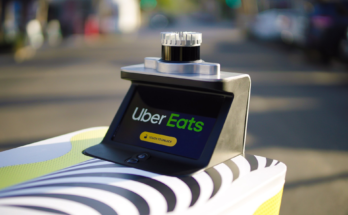
 Reboot WeekWe don’t have to tell you that 2020 was a terrible year. We can’t promise 2021 will be any better, but this week, we’re sharing our best strategies to help you reboot your life and start clean.
Reboot WeekWe don’t have to tell you that 2020 was a terrible year. We can’t promise 2021 will be any better, but this week, we’re sharing our best strategies to help you reboot your life and start clean.Most people never cooked at home more than they did in 2020. If you started last year with no plans to cook more, you might still be stuck with an inefficient kitchen setup that’s miserable to use. No matter your current feelings on cooking, now is the perfect time to overhaul your kitchen organization—and there’s no better system than FIFO.
The first-in, first-out (FIFO) system is exactly what it sounds like; it ensures older things get used before newer things. In order to keep this up, the older stuff has to be the first thing you see when you open the fridge or pantry. That’s why grocery stores put the oldest stock at the front of the shelf, and why everything in professional kitchens is stored with the label facing out.
For home cooks, FIFO is synonymous with labeling everything in your fridge. While it’s an excellent system for keeping track of leftovers and reducing food waste, there’s so much more to it than fridge management. Your entire kitchen can and should be organized around the main FIFO principle: “If you can’t see it, you won’t use it.” Keeping this in mind when reorganizing makes the kitchen you have easier to use, no matter how cramped or inefficient it may be. And, since FIFO is all about using what you have, you can do it without buying a single thing.
The specifics of a FIFO makeover will look different for every kitchen, but the end goal is universal: To arrange the stuff in your kitchen so that you can see as much of it as possible. There are four main ways to do this, starting with your container situation.
G/O Media may get a commission
Streamline your food storage
Pantry clutter is the enemy of a FIFO system, so unfortunately, that’s where you should start. You might think the solution involves spending a ton of money on identical glass jars—what’s easier to see through than glass?—but it doesn’t have to. Organizing your pantry so that everything (or nearly everything) is visible at all times is easier with similarly-shaped containers in a variety of sizes.
A chaotic jumble of misfit Tupperwares won’t work, either. Sort through your food containers, keep matching sets, and dispose of the one-offs. Next, fill in the gaps, starting with stuff you already have. Repurposed food packaging is fantastic for pantry storage, especially if you’re loyal to a certain brand and have a ton of the same containers. (There are a lot of glass jars that once held Adams peanut butter and Bonne Maman jam in my pantry.) If you need to buy new, soup containers are ideal for small-volume storage because they come in multiple sizes but have universal lids.
For bulk foods, skip the overpriced “bulk storage” bins on Amazon and go straight to the hardware or restaurant supply store. I buy flour 50 pounds at a time, and nothing beats a 5-gallon plastic bucket with a twist-off lid. They cost less than $20 at the hardware store and last forever. Buckets do take up a lot of space, though, and aren’t exactly stackable. If you’re strapped for space, look for Cambro containers at restaurant supply stores. They’re smaller and more expensive than plastic utility buckets, but they come in both square and round sizes and stack securely.
Label everything
Labeling your perishables is a signature element of any FIFO system, and with good reason. Clear labels tell you, at a glance, what’s inside a container and how old it is; FIFO doesn’t exist without them.
If you’re already in the habit of labeling the contents of your fridge and freezer, awesome—but don’t stop there. Most items in your kitchen can and should be labeled. Bulk pantry items in opaque containers are the obvious use case, but slapping a label on DIY cleaning solutions, countertop fermentation projects, and even the shelves in your pantry will make your kitchen easier to use. No more losing track of sourdough starter feedings or wondering which shelf you put the coconut milk on; you can look at the label and get on with it. Just make sure those labels face out. Spring for a label-maker if you like, but masking tape and a Sharpie work just as well.
Consolidate, consolidate, consolidate
Labels are great, but they can’t help you if you you can’t see them. This is especially an issue in the fridge: If last night’s takeout gets buried in a graveyard of half-empty soup containers, it’ll expire before you remember it’s there.
Consolidation is the secret second step after labeling your food. It’s easy: Just transfer the contents of larger containers to smaller ones as you use them up. (Universal lids are especially clutch here, because you can downsize without getting a fresh lid.) Ruthlessly consolidating your leftovers and pantry items frees up precious storage space so you can actually see what you’re working with. It also makes it easy to know when opening a new package is actually necessary, and when certain items are running low.
Bonus round: Take inventory
The final boss of FIFO is taking inventory. To be honest, I don’t inventory my kitchen and have no plans to—but I cook for myself and one other adult. If you’re feeding a big family, keeping a detailed inventory can simplify your life.
Inventorying is all about tracking what you have so you know what to buy and when. If you’ve never done it before, start small. Pick one kitchen area—pantry, fridge, or freezer—and write down the name of every food item, how much of it you have, and its expiration date. (Spreadsheets, paper lists, dry erase boards, and even the notes app on your phone all have their pluses and minuses, so use whatever feels natural.) Update the list as things get used up. When you sit down to make a grocery list, consult your inventory to see what you actually need and what can wait. There’s no one perfect system, so play around until you find what works.
If all of this sounds like a lot of work, that’s because it is. Running a kitchen is an enormous job; doing it on top of your regular job gets old in a hurry, even if you love to cook. A FIFO setup won’t eliminate the relentless churn of daily cooking and cleaning, but it will make it easier to actually use your kitchen.



